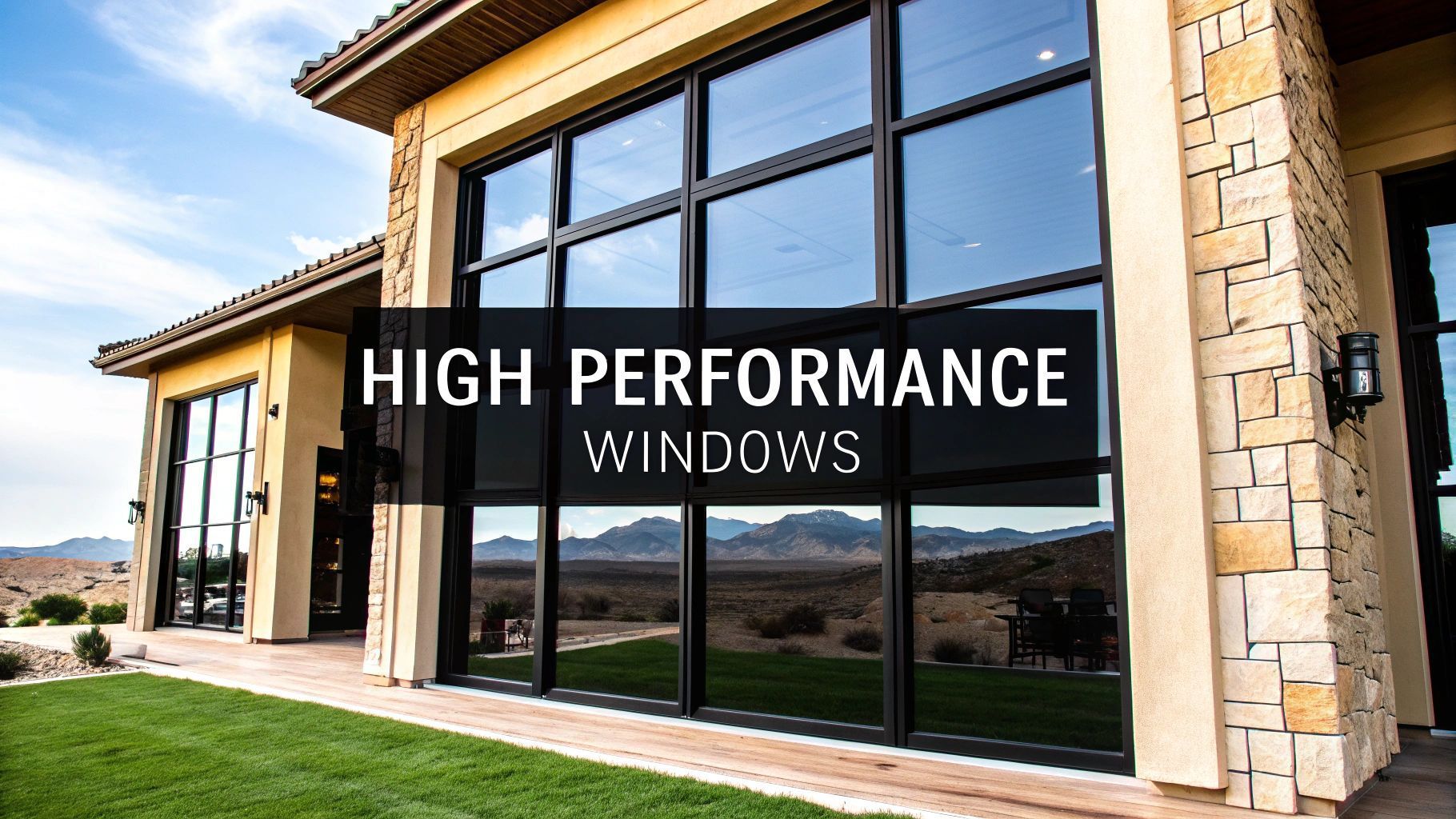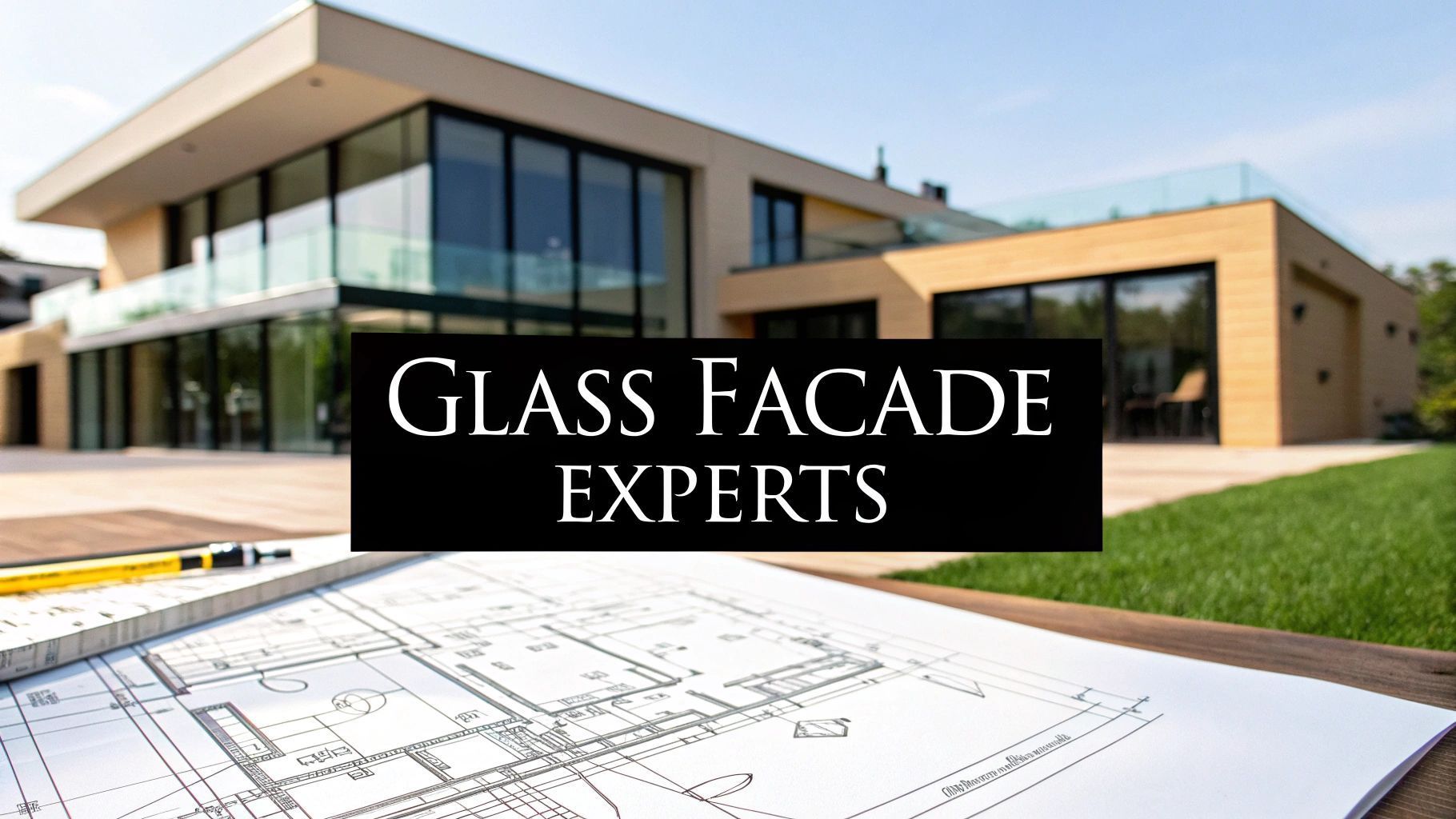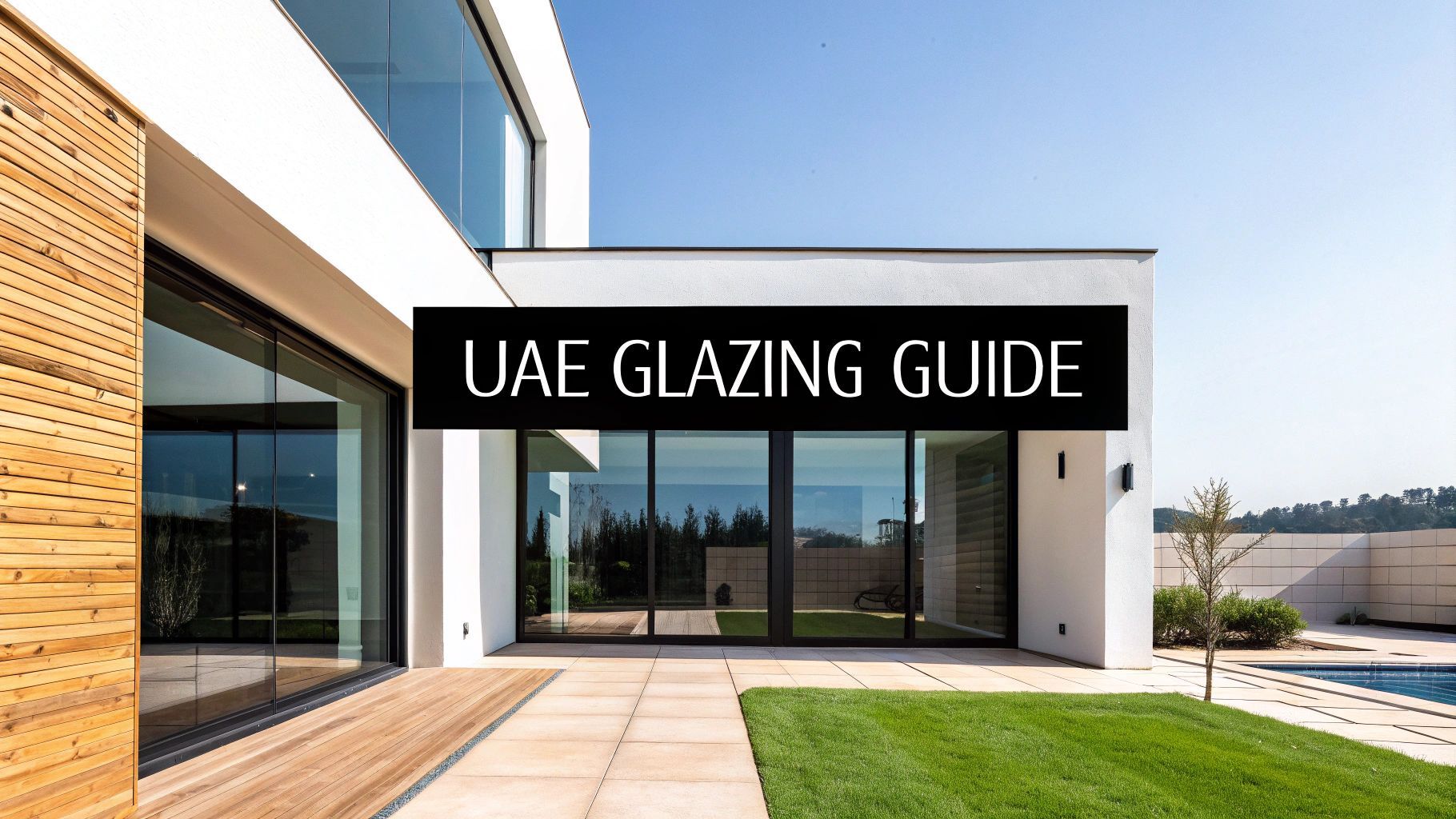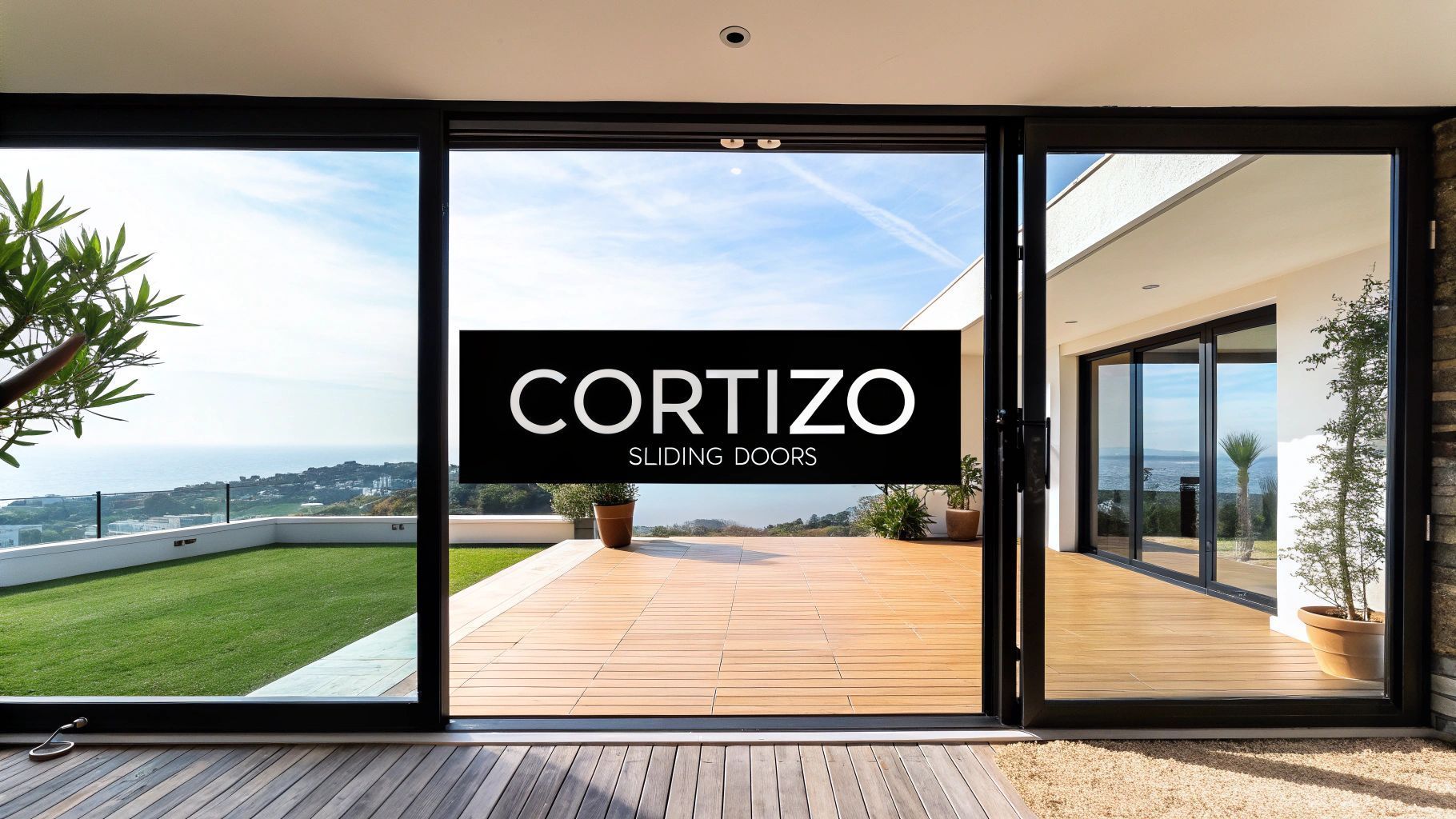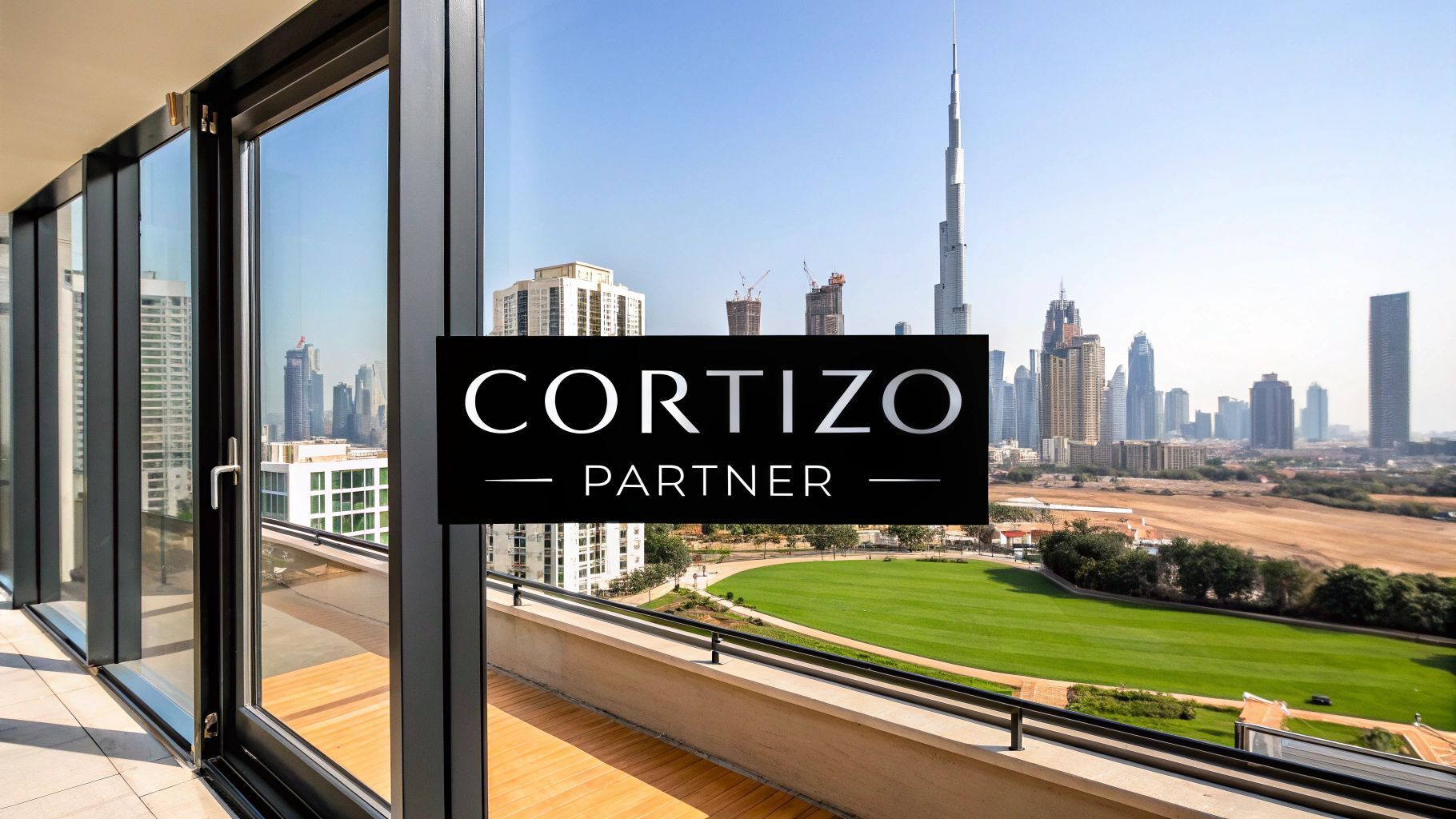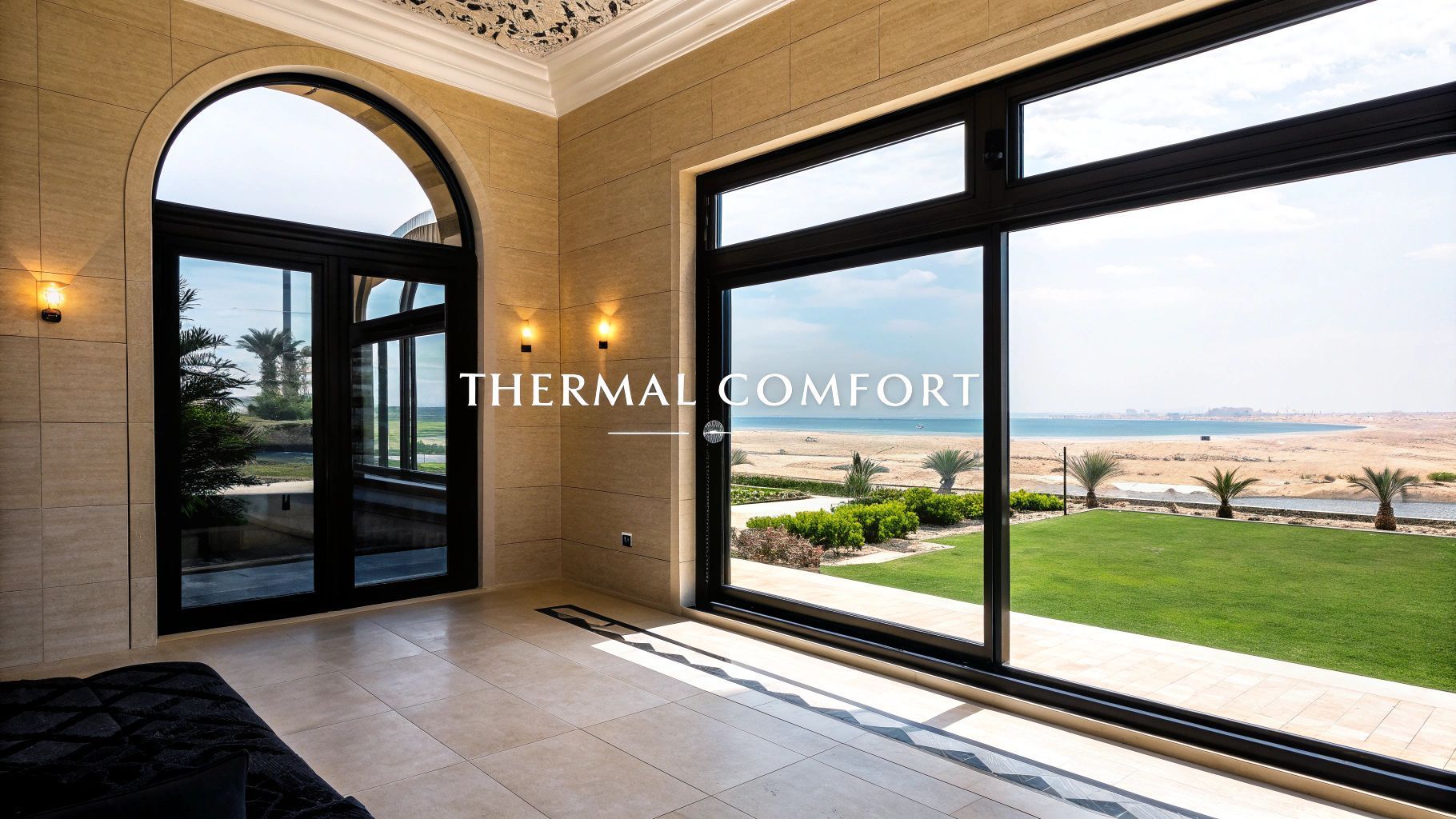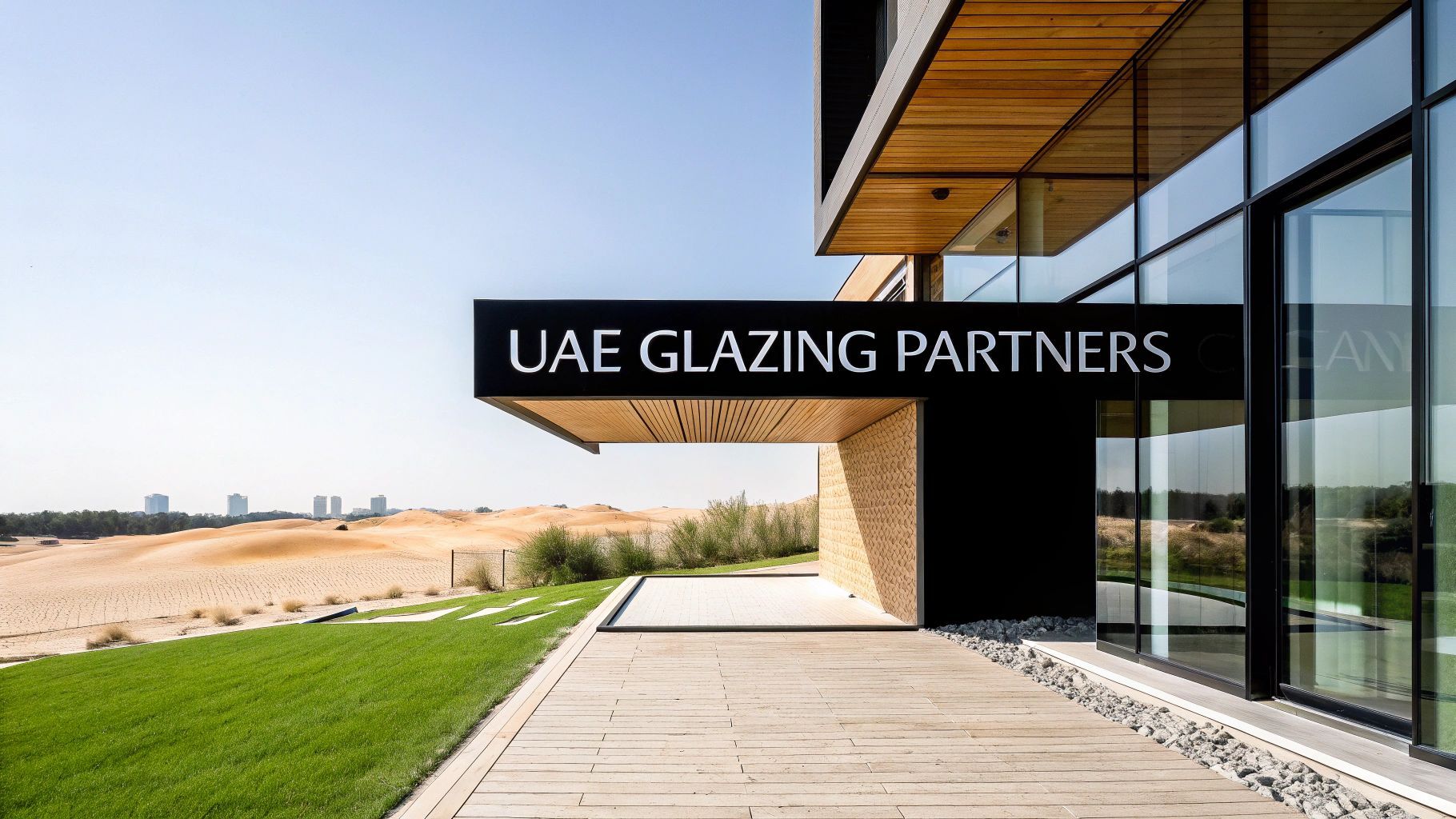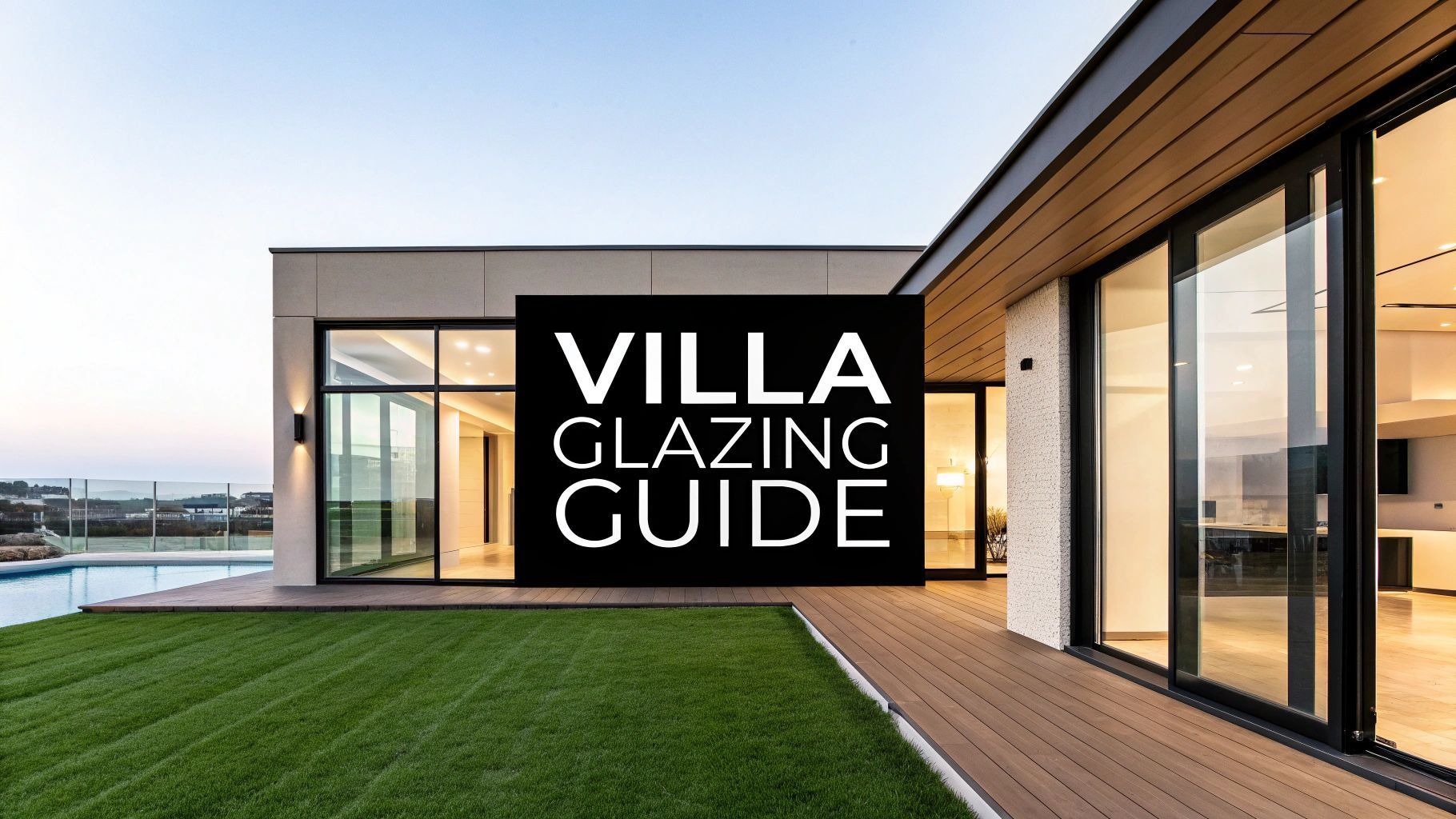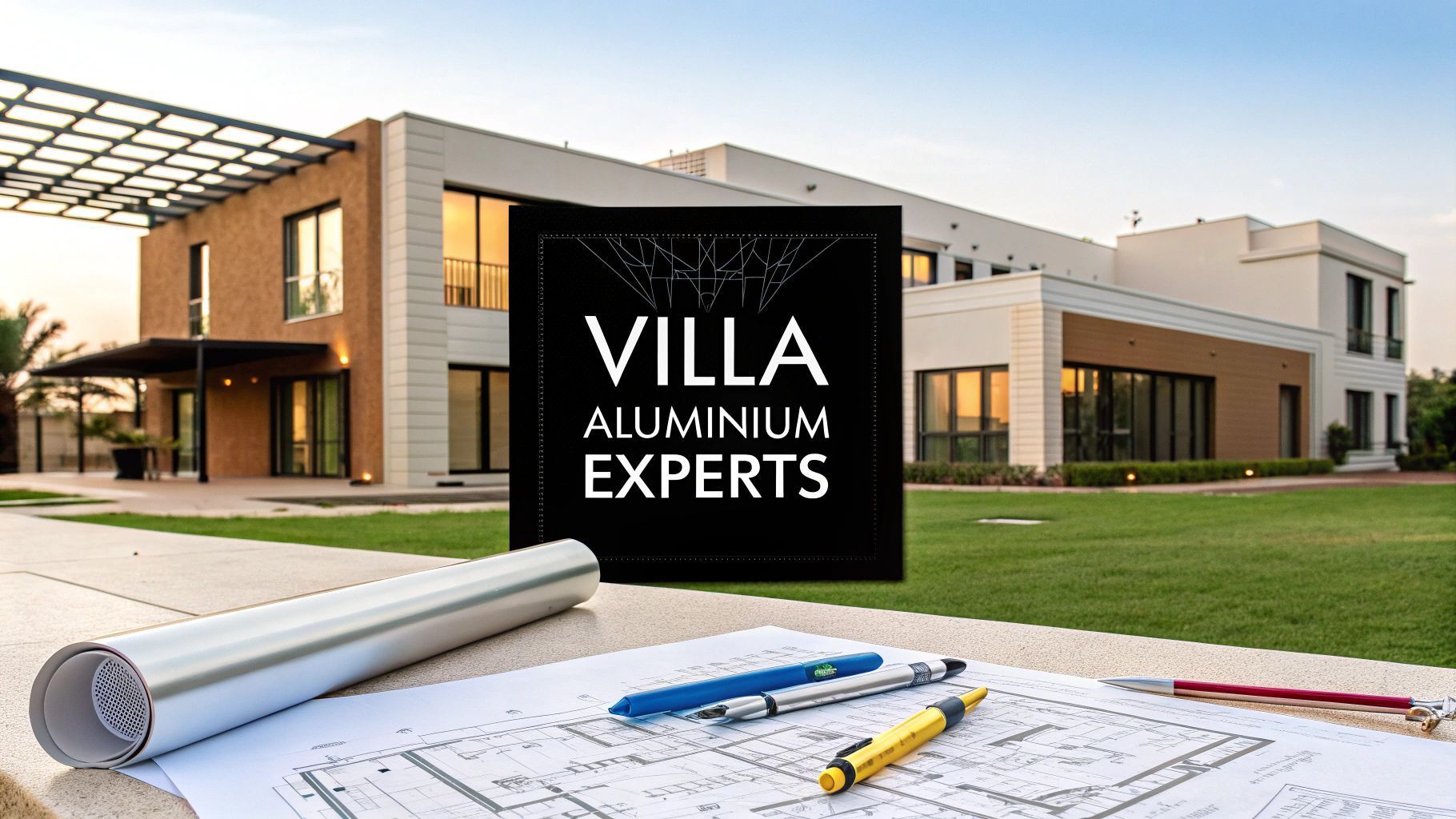What Is Low-E Glass and Why It Matters in Dubai
Low-E (Low-Emissivity) glass is a high-performance glazing solution with an invisible coating that reflects heat while allowing natural light through. In Dubai’s extreme climate, it helps reduce cooling loads, lowers energy bills, and improves indoor comfort—making it a must-have for modern villas and buildings.
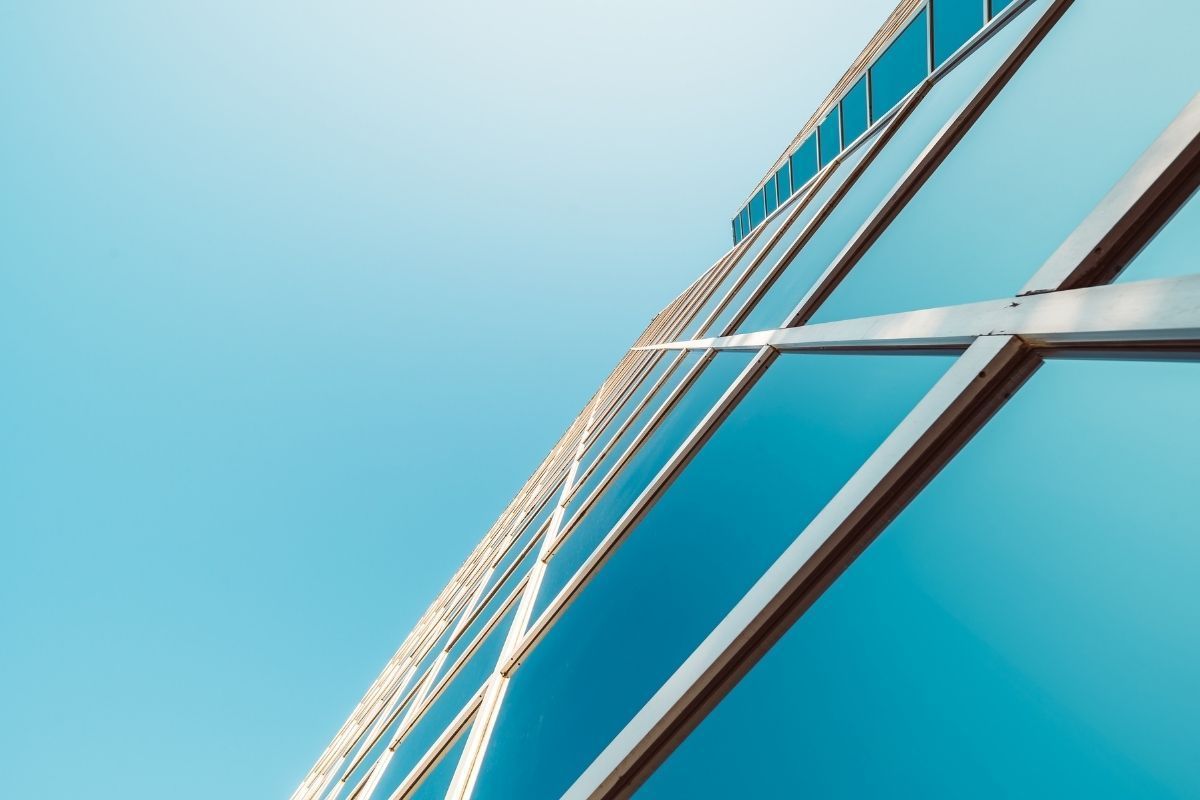
What Is Low-E Glass?
Low-E glass is short for low-emissivity glass, a type of glazing treated with a microscopically thin metallic coating. This invisible layer is applied to the inner surface of the glass pane, and its role is to reflect infrared (heat) radiation while still letting visible light pass through.
In simpler terms: Low-E glass allows sunlight in but reflects heat out.
How Does It Work?
Every surface emits radiant heat in the form of infrared energy. Regular glass absorbs and transmits this heat both ways—into and out of the building. Low-E glass, however, reflects that infrared energy, making interiors cooler in summer and warmer in winter.
There are two main types:
Passive Low-E: Reflects heat inward (used in colder climates)
Solar Control Low-E: Reflects solar heat outward (ideal for Dubai)
In the UAE, solar control Low-E is typically used in double-glazed units, often combined with argon gas for added insulation.
Why Is Low-E Glass Important in Dubai?
Dubai’s climate poses unique challenges—intense sunlight, high temperatures, and long cooling seasons. This is where Low-E glass becomes essential:
1. Reduces Cooling Costs
Air conditioning accounts for a significant portion of energy consumption in UAE homes. Low-E glass helps reduce solar heat gain, meaning your AC doesn’t work as hard. This can cut electricity bills by up to 30% in well-glazed properties.
2. Enhances Indoor Comfort
Rooms exposed to direct sunlight can overheat, especially in villas with large windows. Low-E glass helps keep interiors consistently cool, even in high-sun zones like Palm Jumeirah, Dubai Hills, or Jumeirah Bay.
3. Protects Interiors from UV Damage
Low-E coatings also block a large percentage of UV rays, which can fade furniture, flooring, and artwork. By installing Low-E glazing, you're also protecting your interiors long-term.
4. Improves Energy Efficiency Ratings
For developers and architects, using Low-E glass supports green building compliance, including Estidama, LEED, and Dubai Green Building Regulations.
Where Can You Use It?
Low-E glass is available across a wide range of Swift Rooms glazing systems:
Sliding Doors – like our Cortizo Cor Vision systems
Fixed Picture Windows
Curtain Walls & Structural Glazing
Garden Rooms and Conservatories
It's especially beneficial in south- and west-facing façades, where solar exposure is highest.
Is It Worth the Investment?
Absolutely. While Low-E glass may carry a slightly higher upfront cost than standard glazing, the long-term energy savings, comfort, and property value benefits far outweigh the initial difference.
Conclusion
In a climate like Dubai’s, where high temperatures and sun exposure are part of daily life, Low-E glass is no longer a luxury—it’s a necessity. Whether you're building a villa, upgrading existing glazing, or planning a commercial space, choosing the right glass can drastically improve energy performance and quality of life.
Looking to upgrade to Low-E glazing?
Swift Rooms offers expert advice, design support, and installation of high-performance Low-E aluminium systems across the UAE. Request a Quote or Book a Consultation today.

